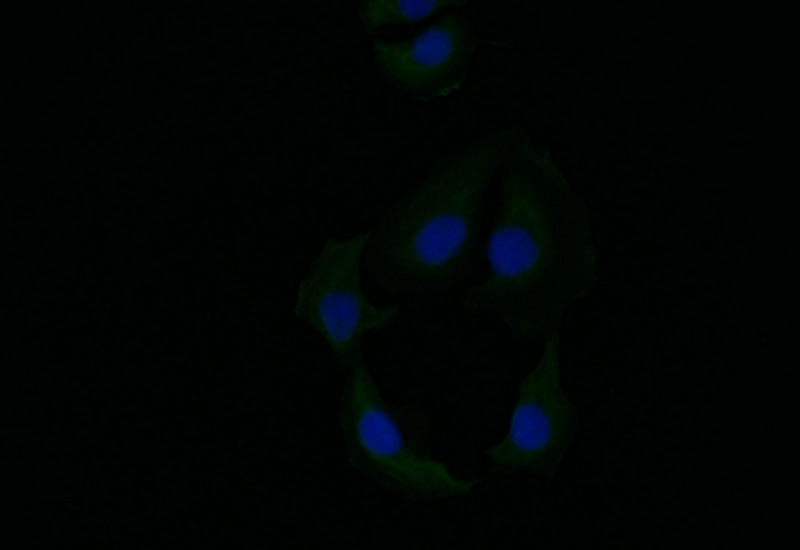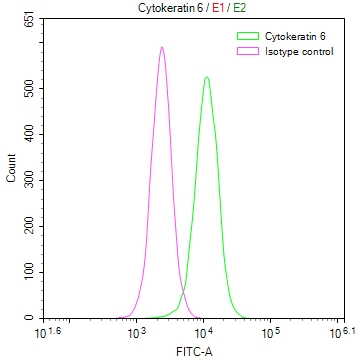Employing in vitro expression systems, the KRT6A recombinant monoclonal antibody is synthesized by cloning DNA sequences of KRT6A antibodies sourced from immunoreactive rabbits. The immunogen utilized is a synthesized peptide derived from the human KRT6A protein. Subsequently, the genes coding for the KRT6A antibodies are inserted into plasmid vectors, and these recombinant plasmid vectors are then transfected into host cells to enable the expression of the antibody. Following expression, the KRT6A recombinant monoclonal antibody undergoes affinity-chromatography purification and is rigorously tested for functionality in ELISA, IF, and FC applications, confirming reactivity with the human KRT6A protein.
KRT6A is a keratin protein that primarily provides structural support to epithelial tissues, including the skin, hair, and nails. Its functions are essential for maintaining the structural integrity of these tissues and for protecting the body from external factors. Dysregulation of KRT6A and other keratins can lead to various skin and nail disorders.





